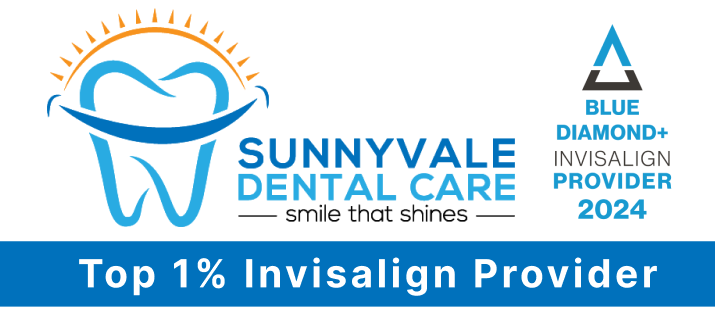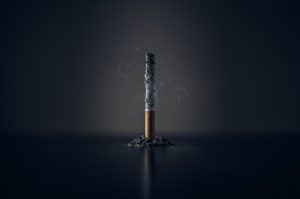Oral Cancer Screenings Sunnyvale, CA
No Smoke, but Plenty of Danger
By now, most of us know that smoking cigarettes isn’t healthy: The smoke you inhale contains toxic compounds that increase your risk of lung cancer. But what about smokeless tobacco? Is that “little pinch” really going to hurt you?
Yes. Smokeless tobacco “is basically as harmful as cigarettes,” says Andres Pinto, D.D.S., D.M.D., of the University of Pennsylvania School of Dental Medicine. “People think it’s not going to your lungs so it’s OK, but if you use it for a long enough time, you’ll increase your odds of acquiring oral and lung cancer.”
In the United States, about 4 percent of men and less than 1 percent of women use smokeless tobacco. The rate varies by state. For example, 18.4 percent of men in West Virginia use smokeless tobacco, but only 2.6 percent of men in Arizona use it.
Rates of smokeless tobacco use among U.S. adults are highest in young men, American Indians, and people who live in the South or in rural areas.
Overall, about 22 million Americans use smokeless tobacco, which comes in three basic forms: chew, snuff and plug. Chew, or chewing tobacco, consists of shredded tobacco leaves; snuff is loose ground tobacco leaves; and a plug is a firm compressed chunk of ground tobacco leaves. Sugar, salts or flavorings sometimes are added to improve the taste.
Just like cigarettes, smokeless tobacco contains chemicals. But unlike cigarettes, smokeless tobacco is in direct contact with the tissues in your mouth. This may make smokeless tobacco even more addictive than cigarettes because nicotine — the addictive substance in tobacco — enters your bloodstream faster. Holding smokeless tobacco in your mouth for 30 minutes exposes you to the same amount of nicotine as smoking four cigarettes.
Using smokeless tobacco heavily or for a long time dramatically increases your risk of developing oral cancer. “The most common site [for oral cancer] is the tongue, followed by the cheek on the side that you put the tobacco,” Dr. Pinto says.
As little as one year of use can cause a white patch to develop in your mouth. These patches should be biopsied, because they may contain cancer cells. Don’t wait for symptoms before you visit your doctor: Until it spreads, oral cancer causes no symptoms.
Using smokeless tobacco can cause other problems:
- Smokeless tobacco is a breeding ground for bacteria, collects food and other debris, and sits in your mouth for hours at a time. The result? Tooth decay.
- Using smokeless tobacco has been associated with receding gums and periodontal disease, although these conditions also depend heavily on how well you take care of your teeth.
- The area where the tobacco sits can become unusually dry, which increases your risk of tooth decay.
- Using smokeless tobacco can reduce your senses of taste and smell, and can contribute to bad breath and discolored teeth.
- You are more likely to get a coating of bacteria and debris on your tongue if you use smokeless tobacco. An advanced stage of this condition is called black hairy tongue. Your risk of these conditions decreases if you practice good oral-hygiene habits.
Danger to Gums
When you see the warning on cigarette packages — “Quitting smoking now greatly reduces serious risks to your health” — what comes to mind? Lung cancer, probably. Emphysema, maybe. But, did you know that smoking is a huge factor in gum disease, which can lead to serious oral problems, including the loss of your teeth?
“Smoking is a major risk factor for developing periodontal (gum) disease,” says Jonathan Korostoff, D.M.D., Ph.D., an assistant professor in the department of periodontics at the University of Pennsylvania School of Dental Medicine. “In fact, when you look at the scientific literature on gum disease, smoking supersedes any other risk factor that has been identified to date.”
Not only does smoking increase the chance that you will develop gum disease, it makes treatment much more difficult and less likely to be successful. Smoking also lessens your mouth’s ability to heal, so much so that Sunnyvale family dentist Dr. Gupta may refuse to consider implants in patients who smoke.
Periodontal disease is a bacterial infection that destroys soft tissue and bone that anchors your teeth to your jawbones. It occurs when bacterial plaque forms on the teeth. In early stages of the disease, you may notice that your gums bleed when you brush or floss. As the infection worsens, your gums begin to break down and pull away from your teeth, forming pockets. Later, the pockets between your teeth and gums deepen as more of the supporting structures are destroyed. Ultimately, your teeth may become loose, painful and may even fall out.
Studies have shown that smokers have more calculus (tartar), more severe bone loss and more deep pockets between their teeth and gums compared to nonsmokers, according to an analysis by the American Academy of Periodontology. Among specific findings, smokers were 2.6 to 6 times more likely to have gum destruction than nonsmokers, and severe bone loss was 4.7 times greater among current or former heavy smokers as compared to people who never smoked.
Researchers are still studying just what smoke does to oral tissues, but it appears to interfere with basic functions that fight disease and promote healing.
“It appears that certain compounds in the smoke affect the normal function of the cells in gum tissue, making smokers more susceptible to an infection like periodontal disease,” Dr. Korostoff says. “Smoking also seems to impair blood flow to the gums which may affect periodontal wound healing.”
One reason smokers are more likely to lose their teeth if they get periodontal disease is that smoking can slow the healing process after periodontal treatment or any kind of oral surgery. One study found that smokers were twice as likely as nonsmokers to lose teeth in the five years after completing periodontal therapy. Additionally, the American Academy of Periodontology reports that in most studies of non-surgical periodontal treatment, smokers showed less improvement than nonsmokers. Smokers also responded less favorably than nonsmokers to surgical treatment.
It is not just cigarette smokers who are at risk. All tobacco products, including pipe tobacco, smokeless tobacco and cigars, can affect the health of your gums. One study, reported in the January 1999 issue of the Journal of the American Dental Association, showed cigar smokers lose teeth and bone at rates equal to cigarette smokers. In addition, experts say pipe smokers experience similar rates of tooth loss as cigarette smokers and smokeless tobacco can cause the gums to recede, increasing the chance of losing the bone and fibers that hold teeth in place.
The only good news about smoking and the health of your teeth and gums is that the Surgeon General’s warning holds true — quitting now does greatly reduce serious risks to your health. In a recent study, 11 years after quitting, former smokers’ likelihood of having periodontal disease was not significantly different from people who have never smoked. At Sunnyvale Dental Care family practice our observations of patients who have quit smoking is pretty much consistent with these findings.
Even reducing the amount you smoke seems to help. One study found that people who smoked more than a pack and a half per day were six times more likely to have periodontal disease than nonsmokers, while those who smoked less than a half pack per day had only three times the risk.
“When I see patients who smoke, whether they are light or heavy smokers, I tell them I think they should stop. I see the destruction it can do,” stresses Dr. Korostoff. “While the past effects of smoking on the gums can not be reversed, cessation is beneficial to periodontal health and is a major preventable risk factor to periodontal disease.”
Tobacco Use and Oral Cancer
Tobacco use may pose the greatest threat to your health as a risk factor for oral cancer. The American Cancer Society reports that:
About 90 percent of people with mouth cancer and some types of throat cancer have used tobacco. The risk of developing these cancers increases with how much is smoked or chewed and the length of the habit.
Smokers are six times more likely than nonsmokers to develop these cancers.
About 37 percent of patients who continue to smoke after cancer treatment will develop second cancers of the mouth, throat or larynx, compared to only six percent of those who stop smoking.
Tobacco smoke from cigarettes, cigars or pipes can cause cancers anywhere in the mouth or the part of the throat just behind the mouth, as well as cancers of the larynx, lungs, esophagus, kidneys, bladder and several other organs. Pipe smoking also can cause cancer in the area of the lips that contact the pipestem.
Smokeless tobacco is associated with cancers of the cheek, gums and inner surface of the lips. Smokeless tobacco increases the risk of these cancers by nearly 50 times.
Oral Cancer Screenings
During a dental exam, Sunnyvale family dentist Dr. Gupta will check your neck and oral tissues for lumps, red or white patches or recurring sore areas.
Screening for early changes in the oral tissue can help detect cancer at a stage when it can be more successfully treated.
Generally speaking, non cancerous oral lesions ,e.g. cold sores and fever blisters tend, tend to resolve on their own and stay for a short duration.
Smoking, especially combined with heavy alcohol consumption, is the primary risk factor for oral cancer. In fact, this combination is estimated to be the most likely trigger in about 75 percent of oral cancers diagnosed in this country. Other lifestyle and environmental factors also may increase your risk of developing oral cancer.
Oral CDX
Oral CDX is a simple spot check or brush test used by Sunnyvale family dentist Dr. Gupta to evaluate spots and detect unhealthy cells – Years before they can cause any harm.
This is used as a sceening tool to determine if additional evaluation of the spot is needed.
- Oral cancer is 3 times more common than cervicle cancer.
- 30,000 Americans will be diagnosed with oral cancer this year.
- 27% of oral cancers are diagnosed in people with no known risk factors.
- It will cause one death per hour, 24 hours per day.
At Sunnyvale family center , we provide oral cancer screenings with all of our comprehensive examinations
Learn more when you visit Sunnyvale Family Dental Care. Call Sunnyvale Dentist Dr. Gupta at 408-720-0900 to schedule a consultation today


